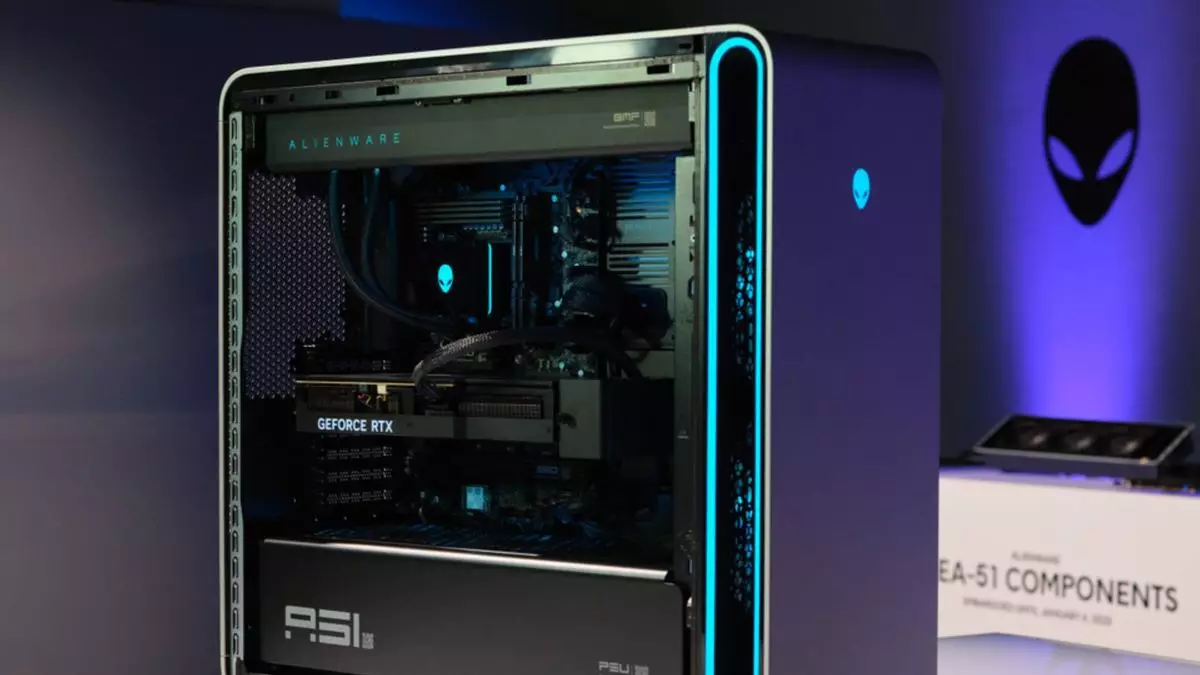Alienware, a name synonymous with cutting-edge gaming technology, has once again captured the spotlight with its latest release, the Area-51 desktop rig. However, amid the excitement lies a paradox of design and functionality that merits a closer examination. The promise of an upgradeable rig is enticing, yet a closer look reveals that this offer may come with significant caveats. This situation arises as an act of innovation mixed with a rather frustrating touch of limitation, reminding us that sometimes, there’s a price to pay for progress.
Are Upgrades Really Upgrades?
At CES, Alienware enthusiasts welcomed news of a fully upgradeable Area-51 model, a significant shift from the company’s history of limiting users’ ability to customize and enhance their rigs. However, this newfound freedom is quickly overshadowed by a key detail: to avail of this upgradeability, customers must purchase a conversion kit for an additional $35. This kit is not just a simple accessory; it includes essential cables for connecting third-party motherboards to the Area-51 chassis. Labels like “connectivity enabler” seem to suggest a simple installation, but the reality is far less straightforward.
The fact that users will have to invest additional money into a conversion kit, combined with the need for compatible power supplies, creates a breeding ground for frustration. Would-be upgraders may now find themselves shelling out more money than anticipated, potentially offsetting any financial savings afforded by the upgradeable feature itself. Thus, Alienware’s claim of a more accessible rig begins to crumble under scrutiny.
The Impressive Yet Flawed Specifications
On a technical scale, the new Area-51 is nothing short of a marvel. Equipped with the latest RTX 50 series graphics cards, it boasts superior thermal management capabilities, presenting itself as Alienware’s quietest and coolest desktop yet. The design leverages positive pressure airflow, effectively minimizing dust buildup while optimizing cooling performance. These advancements are commendable, representing a genuine effort by Alienware to cater to the needs of serious gamers and system builders alike.
However, the glowing specs fail to mitigate the underlying issue regarding motherboard compatibility. The Area-51’s limited upgrade path, especially as it pertains to older models, serves to alienate early supporters of the brand while simultaneously attempting to lure in a new generation of tech enthusiasts. The incompatibility with previous Area-51 systems raises questions about the product’s longevity and retrofitting potential, ultimately shedding light on the unspoken trade-off that lurks behind its dazzling performance metrics.
Missing the Mark on Flexibility
The lack of complete upgradeability out of the box does appear to be a misstep for a brand that styles itself as a champion of fine-tuned gaming experiences. While modularity in GPU, RAM, and SSD upgrades presents a progressive shift, with each component accompanied by QR codes offering guided installation, it’s simply not enough to distract from the crucial limitation regarding the motherboard. For a market where flexibility is prized, Alienware’s seemingly backhanded approach feels more like a marketing ploy than a holistic solution catered to gamers’ evolving needs.
This development can easily be seen as a “two steps forward, one step back” scenario for Alienware. They are making strides with certain modular designs yet seem to fall short where it matters most, thereby clouding their progress with lingering doubts about the true nature of choice in their upgrade paths. If owners of the latest rig frequently need to budget for additional accessories just to maintain pace with technological advances, that raises an unsettling question about the future of Alienware’s competitiveness.
While the new Area-51 rig from Alienware certainly carries an appealing aesthetic and impressive performance claims, the restrictions surrounding motherboard upgrades cast a lengthy shadow over this innovation. Offering upgrade options while simultaneously trapping users in a financial loop of purchase requirements may frustrate even the most die-hard fans of the brand. In the end, the promise of modularity must also come hand in hand with user freedom, and for Alienware, that is a lesson that remains to be learned.

